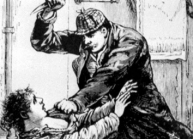The Skeleton Twins
Someone please make Kristen Wiig and Bill Hader a Tracy and Hepburn for our time!

Courtesy of Roadside Attractions
The ghoulish setup could easily form the basis for an eerie psychological horror film: Separated by thousands of miles, a pair of long-estranged twins both attempt suicide only hours apart on the same day. Just as dental assistant Maggie is about to swallow a bottle of pills, she gets a phone call: Her brother Milo, an unsuccessful actor, is in the hospital in L.A. after slashing his wrists in the bath. Maggie cuts short her self-poisoning attempt, flies out to see her brother (to whom she hasn’t spoken in 10 years), and insists he come back to stay with her in the small upstate New York town where they both grew up. Cue the descent into Cronenbergian folie à deux, right?
But because Maggie is played by Kristen Wiig and Milo by Bill Hader, The Skeleton Twins aims instead to be a tender comedy/drama. If it succeeds better at the comedy part than the drama, that is in no way a slight on the acting skills of The Skeleton Twins’ stars, who are both best known for creating flamboyantly weird comic characters during the seven seasons they served together on Saturday Night Live. Producing sketch comedy at that pace for that long has left Hader and Wiig exceptionally attuned to one another as performers. Though they look nothing alike, they’re utterly credible as brother and sister, both in the tragic scenes and the goofy ones. And since Milo and Maggie are both the kind of damaged people who use humor defensively, incessantly, and sometimes cruelly, Hader and Wiig get to push the boundaries of their comic personae.
It takes a while to discover why Maggie and Milo share such a dark streak. Especially toward the last hour, The Skeleton Twins’ script (by Craig Johnson, who also directed, and Mark Heyman) leans too hard on sequential revelations about the twins’ difficult childhood and adolescence, sometimes accompanied with overly arch flashbacks. (On Christmas morning, young Maggie and Milo receive matching Mexican skeleton dolls that, given the movie’s title, work a lot harder to symbolize their owners than they really needed to.) But even when the plot machinery gets to creaking, individual scenes throw off sparks of laughter and insight. A visit to the dentist’s office where Maggie works gives Wiig a chance to launch into some inspired prop comedy—when is a well-wielded set of false teeth not funny? —but the scene also reveals fragility to a degree Wiig rarely has before, as Maggie confesses her darkest secrets to her in-no-position-to-judge brother. And one of the hoariest rom-com set pieces—pop-song lip-sync as bonding experience—gets a bracing reinvention when Milo drags his reluctant twin into a living-room duet of Starship’s “Nothing’s Gonna Stop Us Now” that swells into a song-and-dance number as exhilarating as something from an MGM musical.
In its structure and rhythms, The Skeleton Twins often gestures at the conventions (and some of the clichés) of romantic comedy. It’s not that this story about the complicated love between two siblings has any interest in pushing into creepy incest territory; it’s that the arc of two people who start out at odds and eventually come to recognize one another as soul mates is as well suited to the story of grown siblings as it is to that of lovers. After all, for many people, their sibling relationships are the most lasting, intense, complex pairings of their lives. Johnson’s choice to place a brother-sister relationship at the center of the film, rather than making familial relationships subsidiary to romantic ones the way most mainstream comedies do, is a welcome reminder that the world around us contains a panoply of non-sexual love stories, and that the future of the genre could depend on tapping that lifeblood.
Luke Wilson, as Maggie’s earnest and well-meaning but emotionally cloddish husband Lance, gives one of his funniest and most endearing performances in a while, and Ty Burrell, as an older lover from Milo’s past who’s now a married and closeted professor, goes as deep as his underwritten role will allow. The film is shot in a flat, featureless style that can resemble a made-for-TV movie, and the climactic finale pivots around a development that appears to introduce an element of the paranormal that’s startlingly out of keeping with what’s come before.
But when Hader and Wiig are on screen together the film’s shortcomings fade because the energy they give to and take from each other—a chemistry that, refreshingly, has nothing to do with sexual tension—is so palpable, it’s fun just watching them banter as they get dolled up for an evening out (him in an impromptu drag outfit she rigs up for Halloween, bobbed wig, prom gown, and all). Neither Hader nor Wiig plays the straight-man role, exactly, though her character is the more dispositionally solemn of the two. Rather, they’re a joke relay team, trading—and sometimes competing for—opportunities to crack one another up, and bringing the audience along for the ride.
I found The Skeleton Twins merely entertaining, but I’d love to see these two actors team up again, Tracy-and-Hepburn style, and make a string of movies together—maybe some that would venture further into the post–rom-com territory this one begins to explore. I’d watch them as bickering gay lawyers, or mismatched buddy cops, or archrival paleontologists. If Hader and Wiig can invest The Skeleton Twins’ slightly contrived setup with this much humor and emotional truth, imagine what they could do with a script at the level of their gifts.













